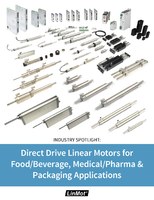Rohm and Haas's Fastrack(TM) Technology on Space Shuttle Runway
Rohm and Haas's Fastrack(TM) Technology on Space Shuttle Runway
PHILADELPHIA, June 20 - If all unfolds as scheduled, when the Space Shuttle Atlantis returns to Earth on Thursday just before 2 p.m. EDT, its wheels will touch down on technology from Rohm and Haas.
Runways used by NASA's space shuttle at the Kennedy Space Center in Cape Canaveral, Florida have just been re-striped with paint containing Fastrack(TM) HD-21A, an environmentally advanced, waterborne coatings technology made by Rohm and Haas.
NASA's Kennedy Space Center is the preferred end-of-mission landing site for the Shuttle orbiters, according to information on the NASA website because it saves the agency an estimated three-quarters of a million U.S. dollars and about five days between missions.
The Rohm and Haas family of Fastrack resins are up to the demanding tasks on this special runway, as well as on commercial runways around the world. A study of airport runway paints conducted by the U.S. Federal Aviation Administration (FAA) a few years ago demonstrated that Rohm and Haas's Fastrack HD-21A technology performed the best when tested against competitive products (see below).
Fastrack resins are preferred for paint formulations used on airport runways because they are tough, dry quickly and have exceptional adhesion properties - and they are far better for the environment than traditional, solventborne technology. Why? Fastrack-based paints do not emit the level of potentially unhealthy and harmful volatile organic compounds (VOCs) that solventborne coatings emit.
The Space Shuttle runway marking was done by Sightline Airport Marking Consultants (AMC) based in Culpeper, Virginia. Sightline President Donna Speidel explains that airport markings have different specifications and more demanding needs than roadway markings. "Centerlines of runways are each three feet wide and 120 feet long, and they really take a pounding," she says. "The stresses on the film are much greater than on a six-inch-wide highway line. Because of the extreme abuse to which airfield striping is subjected, re-striping, especially of the centerline, may occur as often as bi-weekly. The film on runway markings must be more flexible, not brittle, and the reflective glass beads must be the highest quality."
Shruti Singhal, North American market manager for Rohm and Haas's Industrial Finishes and Traffic Paints explains that Fastrack HD-21A, which was used at Kennedy Space Center, has patented cross-linking technology for exceptional adhesion to glass beads, which makes it the ideal resin destined for runway and other airport markings.
Rohm and Haas's technical expertise and market leadership in runway coatings is even being tapped to help create the Airfield Marking Best Practices Handbook, along with specialists from Sightline AMC, FOL Tape, Hawkins Engineering, Safety Coatings, Inc., and Stephen Quilty of Bowling Green State University. The handbook effort started with a roundtable of 30 participants from industry, government (including the FAA), engineers, marking contractors and airport maintenance staff.
Related links:
NASA website about Space Shuttle Landings:
http://www-pao.ksc.nasa.gov/kscpao/nasafact/landing.htm)
Kennedy Space Center - Shuttle Landing Fast Facts from the site:
o The paved runway there is 15,000 feet long; 300 feet wide, and has a
slope of 24 inches from the centerline to the edge to facilitate
drainage.
o When it touches down, the Atlantis orbiter speed will be between 213
and 226 miles per hour.
o The Space Shuttle is unpowered during re-entry and landing, so its
high-speed glide must be perfectly executed the first time - there is
no go-around capability.
o Landing the orbiter at the Space Center in Florida, instead of the
secondary site at Edwards Air Force Base in California saves at least
an estimated three-quarter million dollars and about five days of
processing time for its next mission. According to NASA, it also
eliminates the necessity of exposing the orbiter, a national resource,
to the uncertainties and potential dangers of a cross-country ferry
trip atop one of NASA's two modified Boeing 747 Shuttle Carrier
Aircraft.
Link to Federal Aviation Administration (FAA) study of runway paints:
(http://www.airporttech.tc.faa.gov/safety/paintbeads.asp).
About Rohm and Haas Company
Leading the way since 1909, Rohm and Haas (NYSE:ROH) is a global pioneer in the creation and development of innovative technologies and solutions for the specialty materials industry. The company's technologies are found in a wide range of industries including: Building and Construction, Electronics and Electronic Devices, Household Goods and Personal Care, Packaging and Paper, Transportation, Pharmaceutical and Medical, Water, Food and Food Related, and Industrial Process. Innovative Rohm and Haas technologies and solutions help to improve life everyday, around the world. Based in Philadelphia, PA, the company generated annual sales of approximately $8.2 billion in 2006. Visit www.rohmhaas.com/ for more information. imagine the possibilities(TM)
Source: Rohm and Haas Company
CONTACT: John Channon, Director of Marketing, Packaging and Building Materials, North America, +1-215-592-2433, JohnChannon@rohmhaas.com;
or
Laura Hadden, Director of Communications, Specialty Materials, +1-215-592-3054, LHadden@rohmhaas.com, both of Rohm and Haas Company
Web site: www.rohmhaas.com/
http://www-pao.ksc.nasa.gov/kscpao/nasafact/landing.htm
http://www.airporttech.tc.faa.gov/safety/paintbeads.asp




